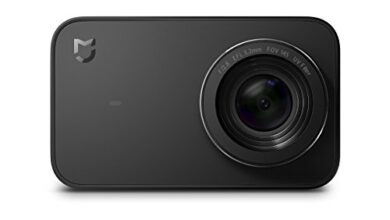Guide to fine art photography

Artistic photography is capable of turning what surrounds us into art. On many occasions, images live in the world of sensations, which means that they can evoke different emotions in each of us. In this article we want to explain what artistic photography is by following some examples of the different modes of photographic art.
Each person will have a personal definition and perception of what art is, since it is a discipline based on sensations. An image captured by a photographer can produce a feeling of joy in some people, while in others it will cause sadness or loneliness. Creative photography allows you to capture an image or a scene and transfer with it a series of sensations or perceptions in the audience.
Photography as art is a combination of styles, since it seeks to capture reality with images, but at the same time it also aims to convey to the audience the thoughts, will and intention of the author. That is, artistic images aim to describe something more than what is seen in the image itself.
Emmet Gowin, an American photographer, defined fine art photos as tools for dealing with those things that everyone knows about, but no one pays attention to. In this sense, according to Gowin, artistic photographers seek to represent things that users cannot or are not capable of perceiving.
To explain in a technical way what artistic photography is is to go against its own context, therefore, instead of continuing with these definitions, we are going to offer you some examples of types of artistic photography, which will help you better understand this discipline.
paint with light
Light painting is the best way to describe a photo in a few words, since the photography technique is based on that. In photography, mastering lighting techniques and learning how to play with light in images offers endless possibilities. To do this, the photographer has to be able to control the exposure, anticipate the result and know how to shape the light.
Movement
Moving photographs, through long exposures, using deliberate movements or taking advantage of the movements of the city or nature itself, are one of the most used aesthetic photos in advertisements and marketing, since they offer a sensation of movement and agility.

low key and high key
Knowing how to use the keys is being able to take artistic photography in black and white to its maximum exponent. As a “basic ingredient” of photography, knowing how to understand light allows photographers to transmit sensations. In this sense, the low key, which is black, conveys elegance, mystery and a certain melancholy. On the other hand, the high key, which would be white, transmits joy, liveliness and purity.
Suggestions
In some cases, the shapes of an image can be hidden or changed to suggest sensations. Some photographers play tricks on the eyes, for example, they photograph a guitar like an Ibanez v50njp-nt and turn its silhouette into that of a woman, suggesting feminine forms in it.
silhouettes
Taking a cue from suggestions, many fine art photographers use the most basic form of imagery, the silhouette, as a way of suggesting or making a visual impact on the audience. The use of silhouettes in professional artistic photographs allows for very visual and impressive compositions.
proportions
Artistic photographers have learned to play with the different elements of the image and retouch them to cause sensations in the viewer. In this sense, the proportions allow you to enlarge small objects, such as a flower or a grain of sand, to offer an image that transmits magic. These types of photographs have greatly improved thanks to the sensors of modern digital cameras that allow textures and light to be captured, playing with the colors of these small objects.
Shades
The shadows of objects and people are another artistic resource widely used in photography. In this sense, shadows also allow creating suggestive games, just like silhouettes, since it is possible to isolate the shadows from their origin, creating games of shapes or use them to add greater depth or a different visual power to the image.

Nature
Nature is art, in this sense, photographers can take advantage of the immense possibilities of the world around us in their images. Much of modern art photography is based on capturing the possibilities of the weather, with sunlight or rain. We must not forget that the weather causes different moods in each person, so photographers can take advantage of a rainy day to create images that evoke sadness, loneliness or melancholy. On the other hand, nature also allows impressive images to be obtained, thanks to the most impressive phenomena such as lightning or a fire.
Depth
Another style of fine art photography plays with the depth of images, highlighting the object in the foreground and blurring the background. This is a widely used tool in photography, not only artistic, but also commercial. The depth of field is controlled by the aperture of the diaphragm, since the more open it is, the smaller the area in focus will be. This type of photography is the most suitable for creating bokeh-type effects.
flare
The “flare” are the spots of light that appear in the image. These stains can be problematic and can “burn” the photo, but if they can be controlled they produce a very artistic effect. This technique is complicated to control, as it requires a lot of practice.
Texture
Art provokes sensations in the viewer, this means that a good photograph can evoke aromas, flavors and, of course, a good artistic photograph should also be capable of transferring sensations of touch to the viewer, taking advantage of the camera’s focus it is possible to highlight the texture of a skin or a fabric.
minimalism
Minimalism is an artistic trend that emerged in the United States in the 1960s as a response to abstract expressionism and Pop Art. This trend reduces the work to its essentials, eliminating everything that is left over, and is increasingly present in artistic photography.



